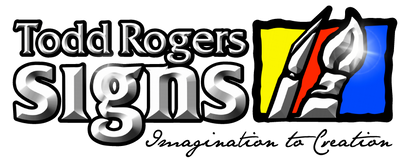Designing Digitally or on Paper: The Best of Both Worlds
Hey there, fellow creatives! Whether you’re new to the graphic design game or a seasoned pro, you’ve probably faced the classic dilemma: should you design digitally, or stick to good old-fashioned pen and paper? The truth is, most graphic designers use a blend of both. But why is that? Let’s dive into the benefits of each method and explore why combining digital and analog design can give you the best of both worlds.
The Charm of Paper: Where Ideas Come to Life
There’s something undeniably magical about putting pen to paper. Here’s why many designers still love starting their projects the old-school way:
- Tangible Connection: Sketching on paper provides a tactile experience that digital tools can’t quite replicate. The sensation of pen or pencil gliding over the surface can spark creativity in ways that screens might not.
- Simplicity: Sometimes, the simplest tools are the most effective. A piece of paper and a pencil strip away distractions and let you focus solely on your ideas.
- Spontaneity: Paper allows for quick, spontaneous sketches. You can jot down ideas or rough concepts anywhere, anytime, without worrying about battery life or software glitches.
- Freedom: There’s a certain freedom in knowing that you can scribble, erase, and start over without worrying about file sizes or compatibility issues.
The Power of Digital: Precision and Versatility
On the flip side, digital design tools bring a level of precision and versatility that paper simply can’t match. Here’s what makes digital design so appealing:
- Endless Options: With digital tools like Adobe Illustrator, Photoshop, and Procreate, the possibilities are endless. You can experiment with different colours, shapes, and effects with just a few clicks.
- Efficiency: Digital tools streamline the design process. Copying, pasting, resizing, and undoing are all quick and easy, saving you valuable time.
- Precision: Digital design allows for pixel-perfect precision. You can zoom in to work on intricate details and ensure everything is perfectly aligned.
- Editability: One of the biggest advantages of digital design is the ability to easily edit and revise your work. You can make changes without worrying about damaging the original piece.
Why Most Designers Blend Both
So, why do most designers choose to blend paper and digital methods? It’s simple: each approach has its strengths, and using both allows for a more holistic and versatile creative process. Here’s how:
- Brainstorming and Conceptualisation:
- Many designers start with rough sketches on paper to brainstorm and explore ideas. This stage is all about freedom and spontaneity, and paper is perfect for that. Once they’ve nailed down a concept, they move to digital tools for refinement.
- Refinement and Precision:
- After the initial brainstorming, designers switch to digital tools to refine their ideas. This stage involves adding details, adjusting colours, and ensuring everything is perfectly aligned.
- Flexibility and Adaptability:
- Blending both methods allows designers to be more flexible and adaptable. If an idea isn’t working digitally, they can easily go back to paper to rework and explore new directions.
- Combining Strengths:
- Using both paper and digital methods combines the best of both worlds. You get the freedom and spontaneity of paper, along with the precision and versatility of digital tools.
Practical Tips for Blending Both Methods
- Start with Sketches: Begin your projects with rough sketches on paper. Don’t worry about perfection—just let your ideas flow.
- Digitise Your Sketches: Once you have a solid concept, take a photo or scan your sketches and import them into your favourite digital design software. This serves as a blueprint for your digital work.
- Use Digital Tools for Refinement: Use digital tools to add details, refine shapes, and experiment with colours and effects. Take advantage of the precision and editability that digital tools offer.
- Keep a Sketchbook Handy: Always have a sketchbook nearby. Inspiration can strike anytime, and having a place to quickly jot down ideas can be incredibly valuable.
Conclusion
In the end, there’s no right or wrong way to approach graphic design. Whether you prefer the tactile feel of paper or the precision of digital tools, what matters most is finding what works best for you. Blending both methods can enhance your creative process, allowing you to take advantage of the strengths of each.
So, embrace the best of both worlds, and let your creativity flourish. Happy designing!



